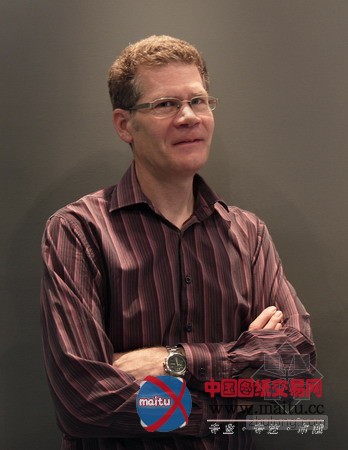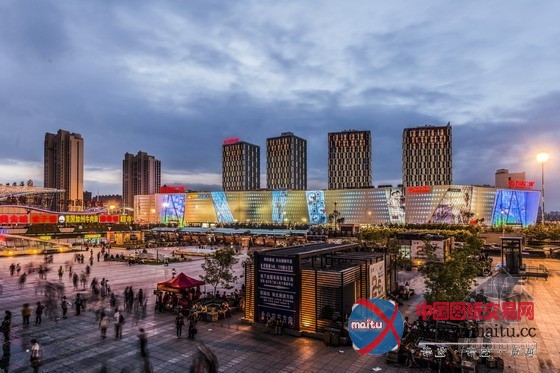 打印本文
打印本文  关闭窗口
关闭窗口 摘要:近期,赫斯科建筑设计咨询有限公司中国区董事长Peter Goldsmith接管了筑龙网专访。
近期,赫斯科建筑设计咨询有限公司中国区董事长Peter Goldsmith接管了筑龙网专访。作为一家成立了40多年的英国建筑设计公司,赫斯科以设计城市综合体见长,进进中国市场仅四年,就设计了哈尔滨哈西万达广场、广州增城万达广场、长春万达广场等一批优良的城市综合体项目。

以下为采访内容。
Peter Goldsmith:赫斯科建筑设计咨询有限公司中国区董事长
筑龙网:城市化的快速过程为购物中间市场带来了蓬勃的朝气。中国市场上对购物中间和商业综合体的需求急速增加,这对您的公司来讲意味着甚么呢? 您若何评价中国市场?
Peter Goldsmith(以下简称Peter):我们的经验比以往任甚么时辰候都更能与当前中国的城市化过程联系慎密。 这包含大年夜型新建项目和现存商业体的改革。中国这一奇特且令人冲动的市场正沿着一条不变的曲线成长,而我们正紧紧跟从着这条曲线。
筑龙网:今朝市场上有如许的说法:一线城市的购物中间已接近饱和,但中小城市又没法消化大年夜型购物中间。您对此如何看?大年夜城市和二三线城市的购物中间有辨别吗?
Peter :虽然一些一线城市的商业零售体在空间上已接近饱和,但这其实不代表这些空间的布局和设计能准确知足城市持久成长的需求,北京恰是如许一个例子。跟着一二线城市的将来成长,仍存在着巨大年夜的机缘,将那些加倍复杂与精美的设计付诸实践。
对中小型城市来讲,其正在经历巨大年夜的人丁增加和消费能力的晋升,本地却没有能胜任其城市功能的城市综合体和商业购物中间。这里包含着巨大年夜的商机,需要开辟商与有决心确本地当局一路合作,委任最好的商业设计团队设计出畅通领悟本地社会、环境和经济前提的作品。而非仅设计出吸引眼球的“标记性记念性建筑”,却在业态方面没有贴合实际,没法知足本地人平易近的购物需求。

赫斯科设计、方才落成的长春万达广场
筑龙网:中国的购物中间与西方的有甚么不合?来自于中国开辟商和中国消费者的哪些身分会影响您的设计?
Peter :消费是一项全球性的行动,中国和西方的消费者在良多方面都有类似的地方,是以在中国购物中间设计的基来历根底则与西方不异。最首要的不合点是美食广场在中国更具影响力,是以我们会把美食广场的设计比重加大年夜,这一区域的房钱代价也更与零售区域相持平。
中国的购物中间不但需要逢迎高端国际化品牌,也要知足本地的小型自力品牌的需求。若何将二者的需求连络在一路,调和彼此之间的关系并不是易事,而二者之间的关系也将产生根赋性改变。零售业在将来的成长趋势,和中国的特别地位都是振奋人心的话题。对中国的消费者来讲,品牌标签的首要性远比在西方首要的多。与此同时,中国具有世界上最大年夜的新兴市场,具有大年夜批崛起的本地零售商,他们有着立异的理念和成功的驱动力,也在市场上据有了相昔时夜的比例。我很是期看看到我们的设计项目可以或许为二者供给杰出的平台。因为购物体验不可是一种休闲编制,除简单的采办物品以外,它更是一种多样化丰硕性的体验经历。
筑龙网:您能跟我们谈谈您对中国购物中间和综合体建筑的期看吗?
Peter :我在前面谈及过这个标题问题,纯真的单体式购物中间终将会消掉,转而被真实的有更遍及功能的综合体建筑所代替。想让项目获得成功,设计者应当充分有效的进行综合,并且为将来的改变性供给预留。我们不但需要建筑和空间的奇特点,也需要建筑和空间具有适应和改变能力,以使其用处和功能获得更好的阐扬。如何把这二者更好的畅通领悟在一路是对建筑师最大年夜的挑战,它要求建筑师对本地环境有很好的理解与反应,同时对商业设计基来历根底则有着更深的思虑。
筑龙网:您如何对待本地建筑设计公司与国外公司之间的竞争?
Peter :率直来讲,我们的首要竞争敌手首要来自其他国外的设计公司,但我们也会因为在竞标代价上的劣势而输给本地的设计公司,特别当我们面对来自经济欠发财省分或非首要城市的项目时,这类环境加倍遍及。
我感觉将来竞争将会在两方面产生改变:
起首,跟着地财产价值的增加,我们的设计经验和能力将会获得更遍及的承认,获得更高的价值,开辟商之间的竞争力也会增加,市场对经验需求的成熟度也就越高。届时将会是优胜劣汰。
其次,中国本土建筑设计公司的设计质量正在慢慢进步,可是这需要时候,并且也依托于中国国内 整体建筑师培训范畴的晋升。今朝良多优良的国内建筑师事务所都是由具有海外进修经历的中国建筑师创办的。跟着中国教育和立异思惟的晋升,国内将会有一批富有才调的建筑师成长起来,届时我们将接见会面对来自本地公司的竞争与挑战,但我想这还需要5年摆布的时候。
Zhulong.com:The fast pace of urbanization has created a booming market for shopping centers. What does China‘s soaring demand for shopping centers and mixed use compounds mean to your firm? How do you think of the market here?
Peter Goldsmith(Peter for short) :Our experience is more relevant now than at any other time to the present urbanization of China. This includes large scale new build projects and remodeling of existing commercial developments that are in premier locations but in need of radical improvement. China is a unique and exciting market on a very steady growth curve and we are following that curve.
Zhulong.com:Some have argued that in tier one cities that shopping centers are near saturation. But smaller cities might not be able to digest large size shopping centers. What are your views on this? Does it make a difference of designing buildings for big cities and second or third tier cities?
Peter :Although some 1st tier cities are near saturation in the capacity of retail space it doesn’t mean that the format and design of this space is correct or will meet the long term needs of that city, Beijing is a case in point.
I think there remains huge opportunity for future development in the 1st and 2nd tier cities for more sophisticated and carefully thought out design.
For smaller cities, these are still undergoing tremendous growth in population and spending power and for many they have very little, if any effective city centre mixed use and commercial/shopping development. I think there is huge opportunity here, the challenge is that private developers in partnership with ambitious local government take their opportunity to commission the best quality commercial designers that understand the social, environmental and economic issues and design accordingly, rather than simply designing eye catching ‘iconic’ monuments that fail to function properly or serve the needs of the people.
Zhulong.com:What are the differences of Chinese shopping centers and those in western countries? What are the preferences from Chinese developers and Chinese shoppers that might have shaped your designs here?
Peter :Shopping is a global thing and Chinese shoppers have many similarities to western shoppers therefore many of the basic principles of the shopping centers that we design for China are the same. However one of the main differences is the strength of F & B which is far greater in China and therefore we always have a higher percentage of restaurant space and the rental levels for this space are more equal with the shop space.
In China we generally have to cater for the high end international brands as well as the smaller local independent traders. How we mix these and the relationship between them is complex. I also think that the importance of one to the other will radically change. This for me is an exciting question regarding where retailing is going in the future and is where China has a unique position. The reason being that for the Chinese shopper the ‘brand label’ assumes an even greater importance than for a shopper from the west, but also China has one of the largest markets for emerging independent local retailers with new ideas and a drive to succeed. I would always love to see our projects provide a platform for both because the shopping experience is a leisure experience and is more about the diversity and richness of experience than it is about simply *** a purchase.
Zhulong.com:Would you please share with us your expectations towards Chinese shopping center and mixed use buildings?
Peter :I have touched on this earlier but I expect shopping centers as isolated entities to die and be replaced by truly mixed use development that includes an ever widening mix of uses. For projects to succeed they then need to blend this mix most effectively and also allow for future change. We need buildings and spaces that have a uniqueness of character but also an ability to adapt and be put to changes of use and function. To provide these 2 things together is the greatest challenge to the architect and requires an understanding and response to the local context and a wider understanding of the basic principles of commercial design.
Zhulong.com:How do you view the competition between local architect firms and foreign firms?
Peter :To be completely honest, currently our competition for design expertise and relevant experience only comes from other foreign companies, however we often lose a commission to a local firm on the basis of their lower fee bid. This is an even more common pattern when we pitch for projects in the poorer provinces or lower tier cities.
I see our future competition changing in two ways:
Firstly, our level of experience and ability is being more widely appreciated and valued and as real estate values grow, competition for development grows and the market matures the necessity for this experience will also grow. As will the ability to afford it.
Secondly, the quality of local architectural companies is improving but this will take some time and is dependent ultimately with the improvement of architectural training here in China. Currently many of the very good local companies are founded by Chinese architects that have had some architectural education overseas. As education, and the place for creative thought gets stronger in China, (both at university architectural education level and at school level) then home grown talent will come through and we will begin to get competition from local companies. I think this may take another 5 years or so.